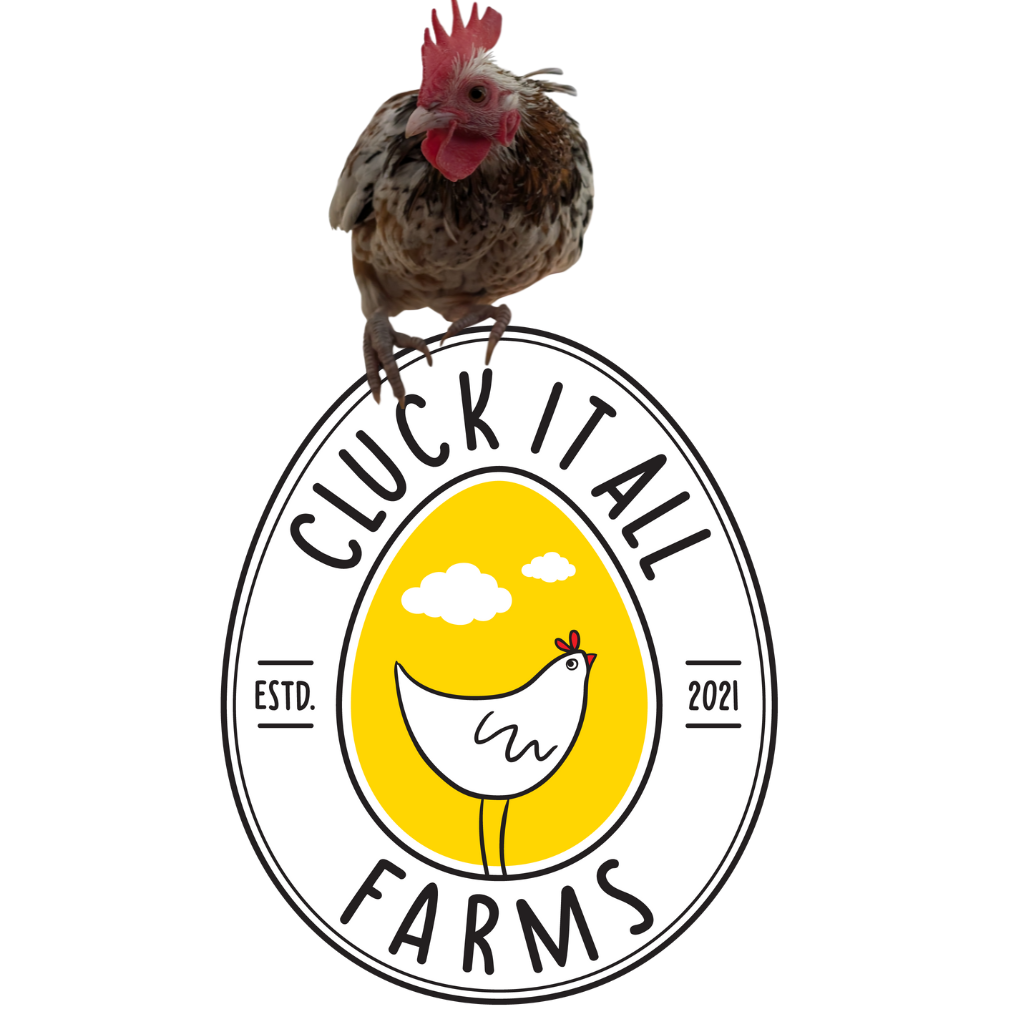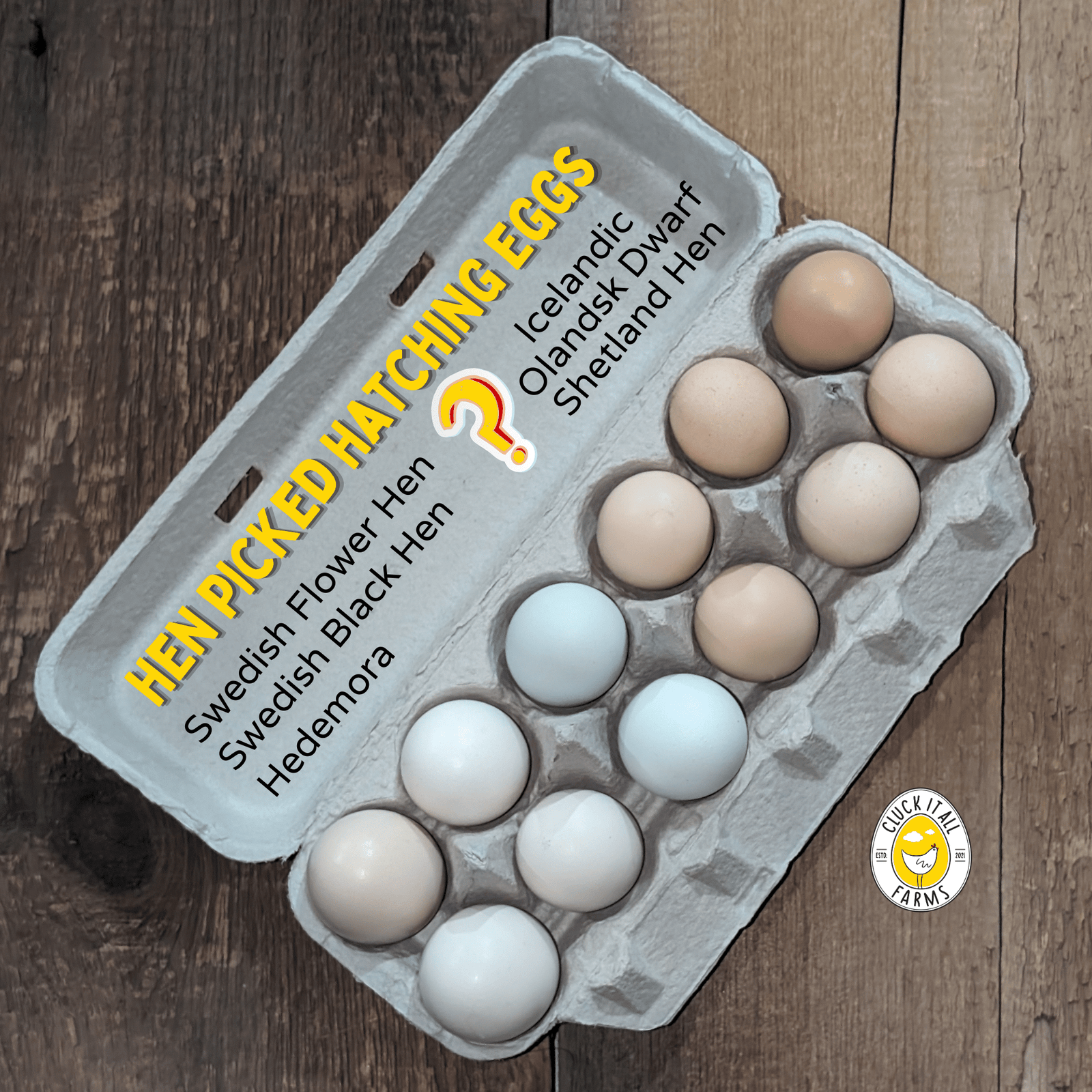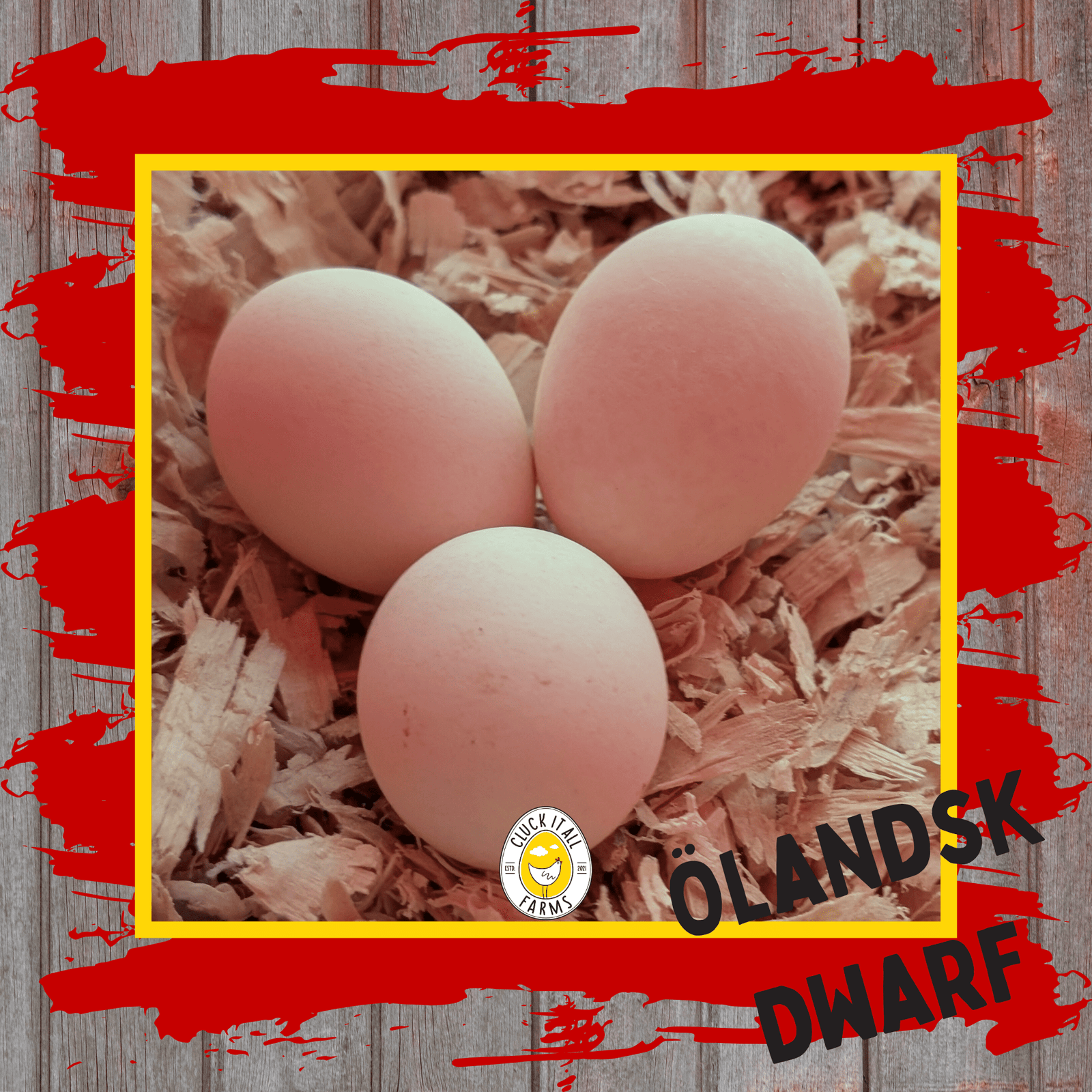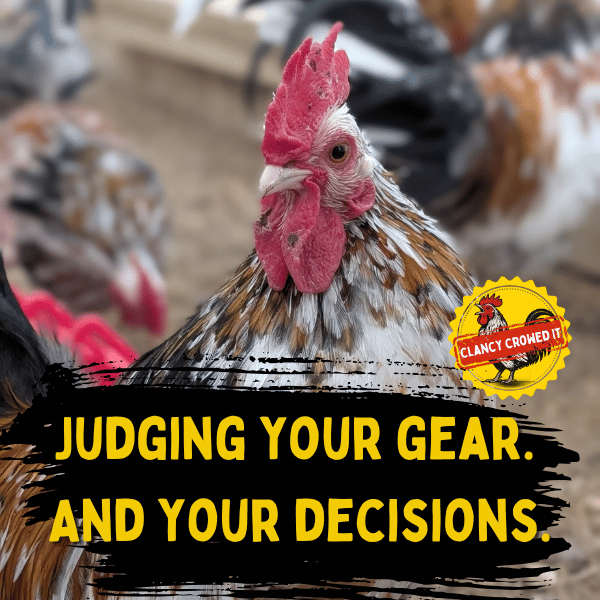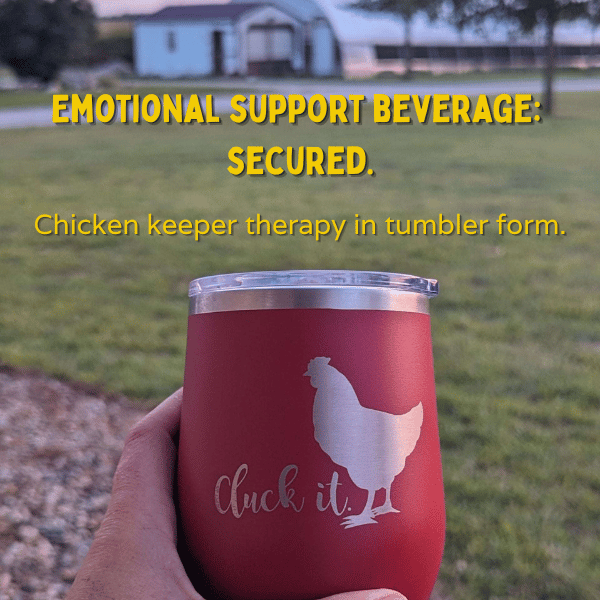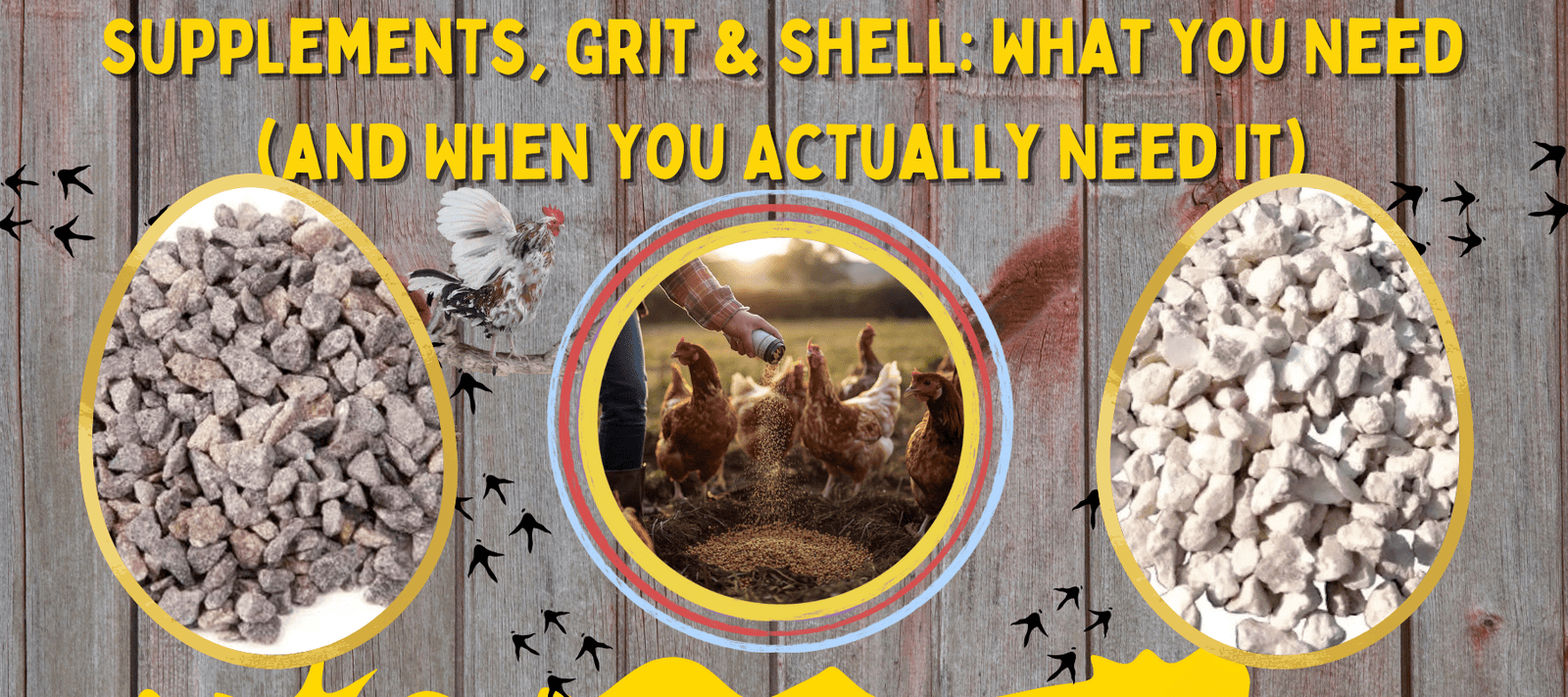Greetings, fellow chicken enthusiasts! Here at Cluck It All Farms, our feathered friends never cease to amaze us, especially when it comes to the eggs they lay. Today, we're embarking on an egg-citing journey into the world of egg oddities. From the miniature magic of fairy eggs to the unexpected surprise of double yolkers, and even the peculiar phenomenon of wrinkled eggs, let's explore these peculiarities with a sense of wonder and a dash of science.
Fairy Eggs: A Whimsical Wonder
Fairy eggs, affectionately known as witch eggs, are a curious phenomenon in the chicken world, appearing as tiny, yolkless surprises. They are most often laid by young hens, whose egg-laying systems are still fine-tuning, or by older hens, signaling a graceful end to their laying days. These petite eggs, more than just a novelty, hint at the lifecycle of a hen's reproductive journey, from the eager beginnings to the quiet end.
The occurrence of fairy eggs goes beyond their intriguing size; they offer insights into the hen's environment and health. Whether it's adjusting to new changes, dealing with stress, or shifting diets, the appearance of fairy eggs can be a gentle nudge for keepers to assess the well-being of their flock. While they may not fill an egg basket or a breakfast plate, they enrich our understanding and appreciation of the natural world's intricacies.
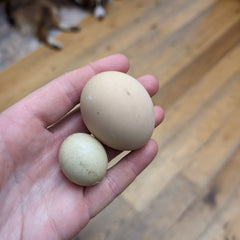

Double Yolkers: Twice the Surprise
Double yolk eggs, where two yolks are cozily wrapped in one shell, offer a delightful surprise in the egg basket, primarily laid by young hens in the early stages of their egg-laying careers. This phenomenon isn't just a biological quirk but is also rich with cultural lore, often seen as a sign of good luck or a harbinger of prosperity and joy in many traditions.
Though finding a double yolker feels like stumbling upon a hidden treasure, they are relatively more common in flocks of younger hens. For the hens themselves, producing such an egg is usually a harmless oddity, though it does underscore the importance of attentive care and nutrition to support their health and reproductive well-being.

Shell-less and Soft-Shelled Eggs: The Delicate Delights
Shell-less and soft-shelled eggs, while surprising to find, are more than just peculiarities; they're important indicators of a hen's health and environment. Shell-less eggs, missing their hard outer shell, and soft-shelled eggs, with only a thin, flexible outer layer, highlight issues ranging from nutritional deficiencies to stress. Factors such as inadequate calcium or vitamin D3, disruptions caused by stress, or environmental inconsistencies can lead to these anomalies.
These unique eggs underscore the need for attentive care, signaling when adjustments in diet, habitat, or flock management may be necessary. For example, a sudden appearance of soft-shelled eggs could prompt a review of the hens' calcium intake or the environmental stress factors that might be affecting their laying process.


Wrinkled and Corrugated Eggs: Beyond the Surface
Wrinkled and corrugated eggs, with their distinctive textures, intrigue anyone who might find them. These unique shell textures, ranging from slight wrinkles to more pronounced corrugation, can result from variations in the hen's laying process. Often, they indicate disruptions in the normal formation of the eggshell, which may occur due to stress, environmental changes, or nutritional imbalances, particularly in calcium and phosphorus. These conditions can affect the smoothness of the eggshell's deposition, leading to the fascinating patterns we observe.
Beyond their intriguing appearance, wrinkled and corrugated eggs tell a deeper story about the health and conditions of our hens. They act as a visual cue, signaling that it might be time to reassess and possibly adjust our flock's care routine. Whether it's enhancing their diet with additional minerals, creating a more serene laying environment, or simply giving the hens more space, these eggs encourage proactive engagement with our poultry's well-being.

Calcium Deposits: A Bumpy Find
The occurrence of calcium deposits on eggshells, those tiny, gritty protrusions that sometimes adorn the surface, is more than just a cosmetic irregularity; it's a window into the egg formation process within a hen. These deposits happen when there's an excess of calcium in the hen's diet or a slight hiccup in the eggshell forming process, causing calcium to cluster in certain spots rather than being evenly distributed. This phenomenon can also be influenced by the hen's age or her overall health, with older or less healthy hens sometimes producing eggs with more pronounced calcium spots.
This additional layer of texture on the eggshell, while unexpected, doesn't compromise the egg's quality or safety for consumption. Instead, it offers a moment of reflection on the delicate balance of nutrition and health in our poultry flocks. Ensuring our hens have access to a diet well-balanced in minerals and vitamins is crucial, not only for their health but also for the quality of eggs they produce. Adjusting feed or supplementing with calcium should be done with care, as too much can lead to these deposits, while too little can result in weak shells.

Slab-Sided Eggs: The Odd Ovals
Slab-sided eggs, characterized by their flattened sides, often raise questions about the environmental and physiological stressors that hens may encounter. These eggs typically result when an egg spends an extended period in the hen's oviduct, subjected to unusual pressure either from other eggs or from the hen's body itself. This prolonged pressure distorts the egg's shape, producing the distinctive slab-sided appearance. Factors contributing to this scenario can range from high laying frequencies, which might not allow eggs to exit the oviduct in a timely manner, to environmental stressors such as extreme temperatures, which can disrupt the hen's natural laying rhythm.
The occurrence of slab-sided eggs serves as an important reminder of the need for vigilant management of the laying environment to minimize stress on the hens. This includes maintaining optimal coop conditions, ensuring that temperatures are within a comfortable range, and providing ample space for each hen to move, feed, and rest without undue pressure or competition. It also underscores the importance of regular health checks and nutritional assessments to support the overall well-being of the flock, helping to prevent conditions that lead to irregular egg shapes.

The Egg-ceptional Phenomenon: An Egg Inside an Egg
In the curious world of chicken keeping, every so often, nature serves up a bewildering surprise—an egg inside of an egg. This rare occurrence baffles even seasoned poultry enthusiasts, presenting a marvel akin to nesting dolls.
This phenomenon unfolds when an egg, instead of being laid, travels backward in the hen's oviduct, encountering a new egg in formation. The hen's body, in its egg-laying diligence, then wraps the second egg around the first, creating this extraordinary occurrence.
Stress or overstimulation in productive breeds can trigger this anomaly. Though rare, it's safe for both the hen and for those curious to explore this natural wonder.
Unscrambling the Lesson
What can we learn from these egg anomalies? First and foremost, they remind us of the complexity and wonder of nature. Each egg, no matter how odd it may seem, tells a story about its producer's health, diet, and environment. As chicken keepers, they prompt us to provide the best care, ensuring our feathered friends are happy, healthy, and capable of producing the standard (and not-so-standard) eggs we love.
Egg anomalies also serve as a reminder of the diversity in the avian world. From the petite fairy egg to the generous double yolker, the variety is astounding. They invite curiosity, wonder, and sometimes a bit of humor into the daily routine of chicken keeping.
So, next time you spot an odd egg in your coop, take a moment to appreciate the little mystery it presents. And remember, here at Cluck It All Farms, we're all about embracing the quirks and joys of chicken keeping. Whether your hen lays a perfectly standard egg or one that's a bit on the bizarre side, each one is a testament to the fascinating world of poultry.
Until next time, keep your nests warm, your chickens happier, and your curiosity piqued. Who knows what interesting egg you'll discover next in your coop!
